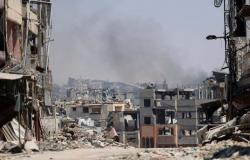
To effectively revitalize damaged marine ecosystems located near the coasts, an innovative pilot project, initially including the deployment of 100 thousand units of artificial reefs along the coasts of Kayar, has just been launched. Regardless of the results, this project, followed by a significant expansion of 1 million 750 thousand units spread across four West African countries, is strategically designed to accelerate the restoration of marine ecosystems. An initiative born from the long-term vision of Blue Home Projects, which focuses on transforming marine conservation, data exploitation and connected infrastructure through artificial reefs.
By Cheikh CAMARA – Kayar can look forward to the future with more peace of mind: depending on the different species of fish, the initial investment for the deployment of artificial reefs is generally amortized in approximately 2 to 6 years, thanks to the increase in wildlife biomass (fish). . Therefore, reassure the mayor of Kayar, Alioune Ndoye, as well as Thiéry Basque and Gaetan Thomas, respectively CEO and vice-president of Blue home, “the positive economic impact is quickly visible both for local fishermen and for related industries . These approaches aim to tackle head-on and in an integrated manner the major ecological problems affecting coastal marine habitats in the region. According to them, “by targeting sustainable restoration and strengthening the resilience of these crucial ecosystems, this strategy represents a deep commitment to the protection and regeneration of marine biodiversity, essential for environmental health and social well-being. -economic of West Africa. These innovative projects will create a market for West Africa, enabling the construction of a reef production plant as well as other concrete products, which will greatly contribute to the economic development of the region.
An initiative started 3 years ago, for 2 billion 500 million CFA francs, for the creation of marine reefs intended for the regeneration of the resource, to the credit of the Deputy Minister of Quebec in charge of Fisheries and aquaculture, Mr. Aziz Niang. A large, labor-intensive project which will allow fishermen as well as young people in the commune of Kayar to start an activity generating financial resources. Thiéry Basque and Gaetan Thomas note that “by placing technology at the heart of our strategy, Blue home aspires to set a new standard for marine monitoring, offering a proactive response to ecological challenges and strengthening the resilience of the oceans in the face of climate change, while contributing to the sustainability of the fishing industry and the long-term viability of West Africa’s maritime economies. Also to continue: “If the opportunity presents itself, we would like to participate in the development of a strategic plan for a blue economy in Senegal with African and Canadian collaborators.” Furthermore, “with African partners and our Canadian experiences, Blue home would like to contribute to finding practical solutions to minimize the enormous losses of fish which would greatly contribute to the environmental health and socio-economic well-being of South Africa. ‘West”. Before noting, in conclusion, that “Blue Home is ready to establish a long-term relationship with West African countries by starting with a pilot project in Kayar in Senegal. The economic, social and environmental benefits will be considerable, contributing greatly to sustainable economic development and the new blue economy for West Africa.
Pilot project on the coasts of Kayar
This initiative, according to the mayor of Kayar, aims to “the initial deployment of 100 thousand multi-species artificial reefs along the coasts of Kayar. The importance and strategy of this deployment of multi-species reefs is to generate rich and varied marine habitats, easily accessible to artisanal fishermen. This will have the effect of reducing the pressure on natural ecosystems while promoting sustainable fishing closer to the coast.
The cost of the project is estimated at 3 million euros for 100 thousand reefs in Kayar. A third of the cost (around 1 million euros) will be spent in the local economy from unloading from the Dakar quay and by employing local fishermen to deploy the artificial reefs with barges. For the pilot project, it is suggested to set up 100 thousand multi-species artificial reefs. The recommended configuration provides for the installation of a reef every 5 square meters, in accordance with the guidelines issued by Fisheries and Oceans Canada. The proposed sites will be divided as follows: “5 sites of 10 thousand units will be deployed along the coasts north of the Kayar Trench”, “5 sites of 10 thousand units will be deployed along the coasts south of the Kayar Trench “. For the execution method, coastal sites with local fishermen will be identified, according to environmental and socio-economic criteria, detailed in Annex III, and local fishermen will be engaged for the execution of an effective deployment of the reefs.
The central objective of this ambitious project is to restore marine ecosystems along the coasts of West Africa. It is proposed to establish 1.75 million multi-species artificial reef structures along the shores of Senegal (750 thousand), Morocco (500 thousand), Mauritania (250 thousand) and Benin (250 thousand) , particularly near fishing communities. The major challenge of this vast deployment operation lies in the creation of diverse and abundant marine habitats, which will be directly accessible to artisanal fishing communities. This initiative should thus reduce the impact on natural ecosystems and encourage sustainable fishing methods near the coasts.
Context of West Africa and Senegal
West Africa, with its vast Atlantic and Mediterranean coastlines, relies heavily on its marine resources for food security, employment and the economy. However, marine ecosystems near the coasts of West Africa are experiencing accelerated degradation due to overfishing, pollution and unsustainable fishing practices, threatening marine biodiversity and the viability of artisanal fisheries. This situation jeopardizes the livelihoods of millions of Africans and national food security.
One of Senegal’s blue economy strategies proposes proactive intervention to rebuild these marine ecosystems. “By creating artificial marine habitats, we aim not only to restore biodiversity and increase fish stocks, but also to make fishing safer and more economical for artisanal fishermen,” indicates Mr. Aziz Niang, according to whom “these Artificial reefs provide shelter, spawning areas and food for various marine species, thus directly contributing to the revitalization of coastal ecosystems.
To establish win-win agreements, Blue home offers short, medium and long-term projects in four phases to restore marine ecosystems for the benefit of West African countries. During the initial phase (phase 1) of the pilot project aimed at promoting a blue economy in Senegal, Blue home proposes to deploy 100,000 units of coastal artificial reefs in Kayar, to produce a significant impact on the marine ecosystems along its coasts . By deploying a sufficient number of reefs, environmental managers and researchers will be able to better assess the effectiveness of different approaches and adjust deployment strategies based on feedback and research results, thereby optimizing impact. global ecological. This step is based on key principles such as the scale of the actions required, the urgency of taking these actions, the improvement of biodiversity and the consolidation of the sustainability of marine habitats in this area. “Depending on the different fish species, the initial investment for the deployment of artificial reefs is generally amortized in around 2 to 6 years, thanks to the increase in wildlife (fish) biomass. So, the positive economic impact is quickly visible, both for local fishermen and for related industries,” remarks Mr. Aziz Niang.
Increased socio-economic benefits and boosting local economies
The scale of deployment directly influences the socio-economic benefits of artisanal fishing. The deployment of artificial reefs near coasts presents a significant opportunity to revitalize marine ecosystems and support the local economy. It is proposed to use local fishermen to deploy the artificial reefs at sea. This strategy offers a concrete solution to the challenges faced by artisanal fishermen, by reducing the need to travel dangerously far from the coastline to find fishery resources and by posing the foundations of sustainable and prosperous fishing for future generations.
Greenhouse gas capture and water filtration
The algae and marine flora that very quickly colonize artificial reefs actively absorb GhGs, helping to combat climate change. The structures become carbon neutral in less than a year, transforming Blue Home Reefs into negative CO2 emitters that could generate additional revenue in a carbon exchange market. In addition, reefs facilitate the filtration of water by algae and molluscs, contributing to the reduction of marine pollution while minimizing the impact on the seabed through their lightweight and compact design.
Creation of interconnected housing networks
Artificial reefs are most effective when deployed in groups and interconnected networks, rather than individually and separately, because this helps create ecological corridors that promote the dispersal of species and increase the genetic diversity of populations. Large numbers of reefs help connect otherwise isolated areas, supporting the migration, reproduction and recovery of marine species over large areas.
Ecological and economic network based on added value
To strengthen the resilience of marine ecosystems in the face of pressures such as climate change, pollution and unsustainable fishing practices, “a large-scale restoration approach is necessary,” say the project initiators. According to them, “extensive networks of artificial reefs help buffer these impacts, providing stable habitats and supporting populations of key species for ecosystem function. The added value to concrete, through the creation of artificial reefs, will help restore the ecological resilience as well as the economic resilience of the country.
Corresponding





